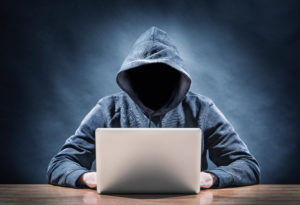
Nowadays, with most of the civilized world connected by WiFi or a data connection, it’s easy to simply pick up your phone or hook up your laptop and check email, make a reservation or check your Facebook page. Unfortunately, the ubiquitous signals have also made personal data thieves just as plentiful, making security when you travel a top priority. Here are some travel tips to help you keep data safe so you can work on what you need to and prevent snoops from snooping.
Banking
Let your bank know your travel itinerary so they can track any suspicious charges on your debit or credit card. Experts also recommend getting a travel debt card (i.e., a temporary debit card) from your bank and leave the regular one at home. Other people have one card linked to one specific travel account with a finite amount of money on it.
Avoid Public Computers
We can’t stress this enough: don’t use public computers! Among the many reasons, they’re bound to be rife with viruses and are filled with unknown software installed by who knows who—that includes key-logging software that can potentially capture every single stroke of your passwords.
If you have no choice:
Refrain from logging into anything important (such as banks or credit card sites) or buying anything that requires you to enter your credit card number.
Use a USB stick. If you need to print something out, rather than logging into your email accounts on a pubic computer, copy the file onto a memory stick and use that. You can also copy software onto the stick and use it instead of whatever is on the computer. And don’t forget to regularly scan the stick for devices.
Public WiFi – Free, But Won’t Keep Data Safe
Free WiFi is ubiquitous, but that doesn’t mean it’s secure—even if it has a password (i.e., hotels and restaurants). The best thing you can do is assume other people can connect to the same network and can surf along with you without you knowing.
What can you do?
Protect your browsing by typing in “https” in the address bar when you access your Gmail account, for example (https://gmail.com as opposed to http://gmail.com). If a lock appears beside the address that means the data you send and receive from that particular site will be encrypted.
Use a Virtual Private Network (VPN). Basically, if you have a VPN you connect to a server somewhere else in the world and all of your information gets encrypted. There are several free options and other reliable pay ones, including VPN Unlimited, which has an app option for your smartphone and iPad.
Believe it or not, cellular networks are safer than WiFi networks, so you might want to connect through there instead if you have a good data plan (read: not prohibitively expensive on roaming) to check anything sensitive.
Protect Your Pics
The last thing you need after spending a day shooting pics during a once-in-a-lifetime trip is to lose them—whether to theft, water damage, forgetting your bag on the security belt or a cab… Why risk it?
Upload your pics to your computer every day and connect that nifty portable hard drive you bought before you left to back up each and every one. As an added layer of protection, upload everything to the cloud using an option such as Dropbox, iCloud or Google Plus. Other services, such as Crashplan, automatically backs everything up whenever you’re connected, plus you can always go back and retrieve documents or images from any of your devices with their app.
Watch Your Password
How many different passwords do you have? Yeah, we thought so. Using the same two or three passwords on everything—because, let’s face it, it’s hard to remember all 850 of them—is really not a good idea. What’s a traveler to do? Luckily, services like Dashlane and Lastpass can create unique passwords for every single website you use. All you have to do is remember one master password.
And For Good Measure…
In case your laptop gets stolen, having encryption enabled will make everything on there turn into gobbledygook unless they have the main password. Macs have File Vault, Windows 9+ ships with encryption enabled.
As for your smartphone, iPhone users can count on Find My iPhone and Android users have Android Device Manager to help you track it down in case it’s stolen, not to mention report its location sound alarms, take pics of the thief, display messages on the screen and more. They can also remotely wipe out everything on your device when the would-be cyber thief connects it to the Internet.
Just make sure everything is installed and activated—not to mention backed up—before you leave.








